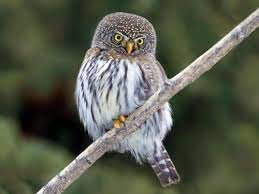It was an ordinary day. Reading an article in my latest Smithsonian Magazine about "Avian America." One segment was titled "Bird by Bird" and talked about some of the most remarkable birds in the world. I selected a few of my favorite birds to share with you in this story. Maybe you too will enjoy the descriptions and picture what I will write about in each segment. So...follow along as I begin with the Roseate Spoonbill.
The Spoonbill exited its shell the only way it knew...a blunt pink spoonbill! The distinctive bill proved to be useful as the chick grew to scoop up crustaceans and fish from the ocean. These birds have been described as "exhibiting paradoxical glamour and drollery," according to writer Robert Allen back in 1942. The Audubon Society website describes it, through the words of Kenn Kaufman, as "gorgeous at a distance and bizarre up close." After being almost exterminated by plume hunters in the late 1800s, the bird made a remarkable comeback. They can be found along the Gulf Coast and farther south. With sea-level rise impacting their fishing grounds, they've been sighted farther north in states such as Virginia, Maryland, the District of Columbia, New York and even as far North as Michigan and Connecticut. Just a very unusual bird that must be so neat to view if you ever have the chance to see one in person.
The Northern Pygmy Owl might at times be hard to find if hiking through a forest. Even when you don't see them while hiking through the forest or sitting in a lush patch of sword ferns on the forest floor and looking upward into the canopy, just knowing they are somewhere up there, watching, deepens the experience and magic of the place. Could be that the mother owl and her mate are searching for food to deliver to their chicks in a nearby tree. In the predawn hours, moths are commonly delivered to their nest and as the day progresses there might be a steady stream of mice and voles which are often on the menu. Although these owls aren't much bigger than a house sparrow, they can prey on species up to three times their size.
The California Condor is the largest bird species in North America. They are critically endangered, with just 275 free-flying in California, Utah, Arizona and Baja California. Their heads and crops can reflect the entire range, from yellow to pink to crimson. You can hear the wind flow past their massive wingtips, much like the sound of dozens of swords simultaneously swinging through the air. If you are lucky enough to have one of these flying giants soar past you and look you right in the eyes, you can immediately sense their undeniable intelligence. I have seen several photographs of the birds and many have been "tagged" as this one shows on its wing.
Three great birds that share the term "Avian America." It was another extraordinary day in the life of an ordinary guy.




No comments:
Post a Comment